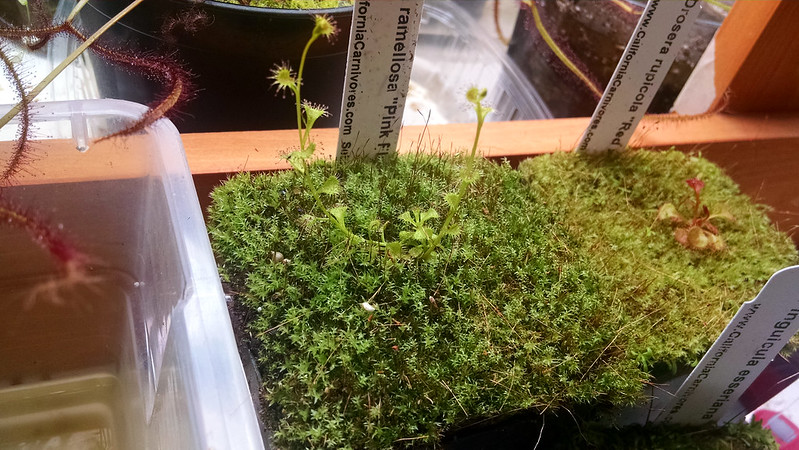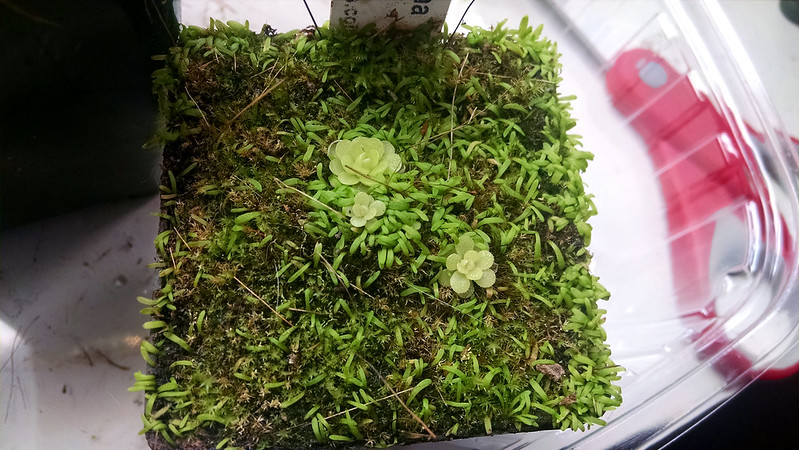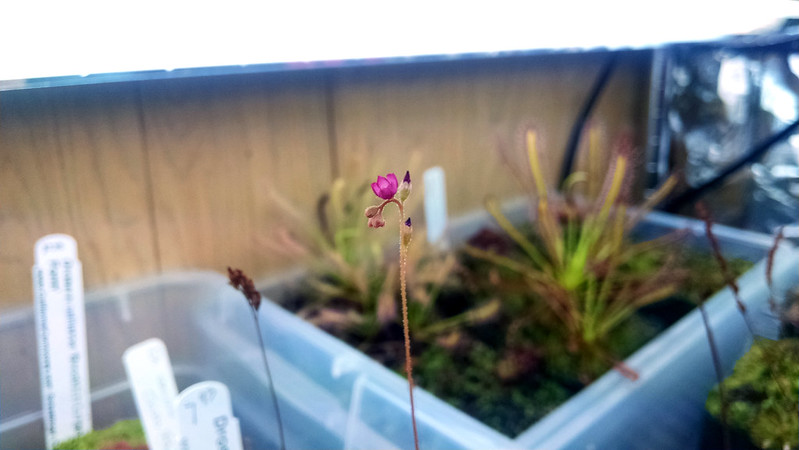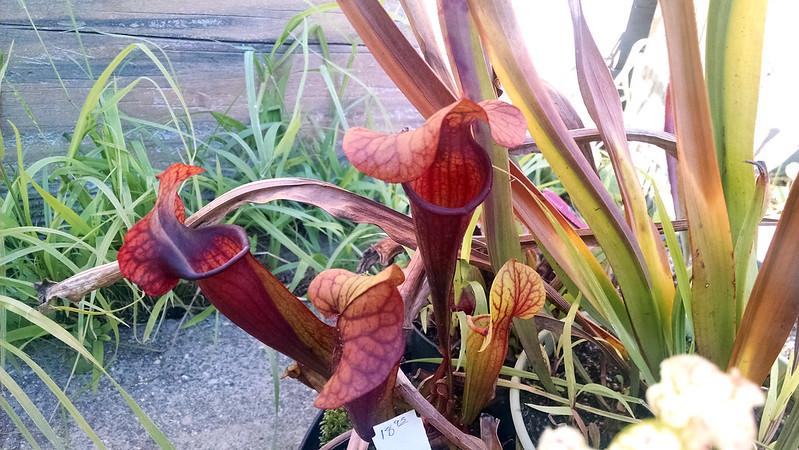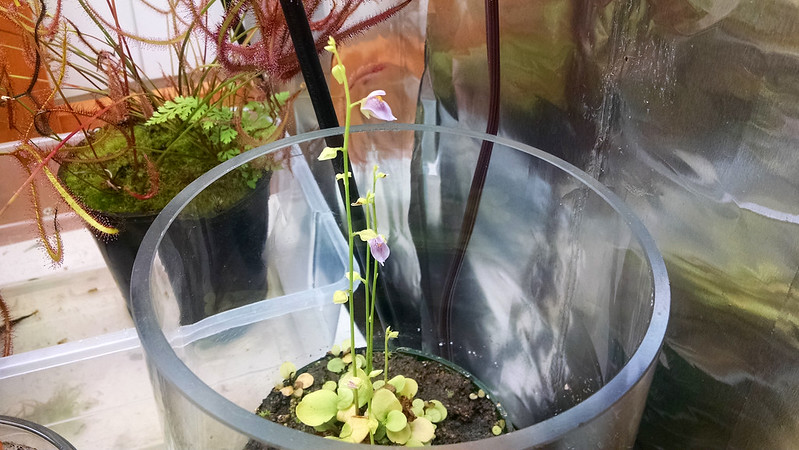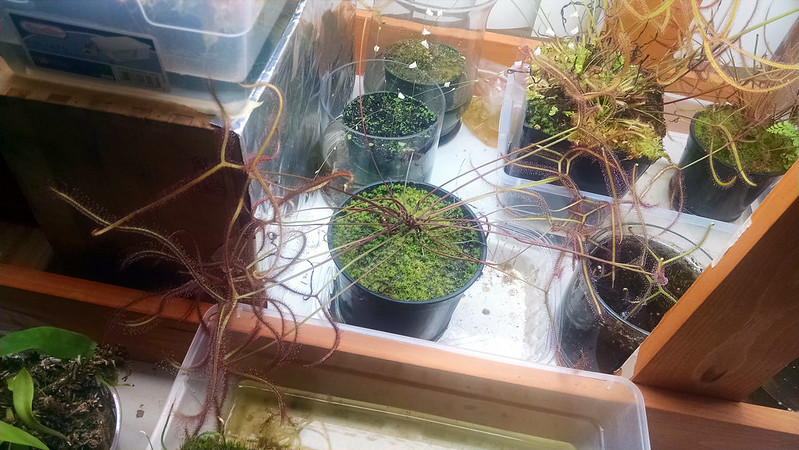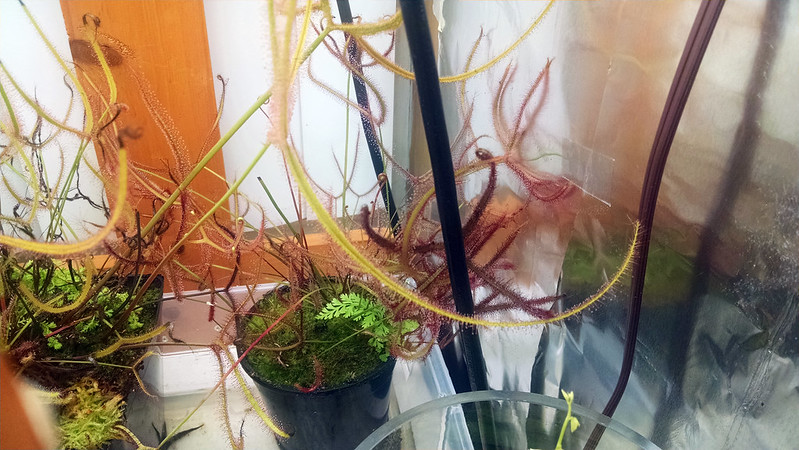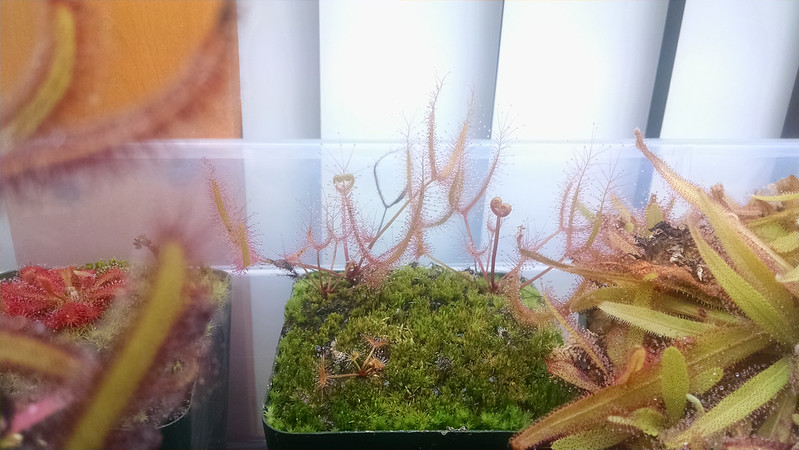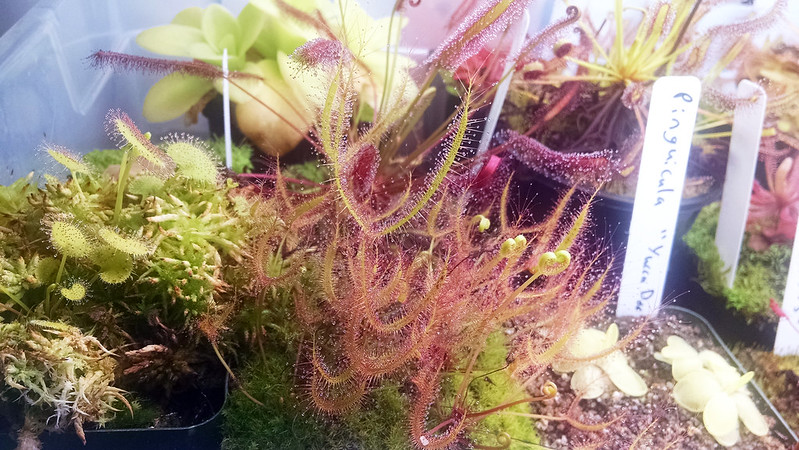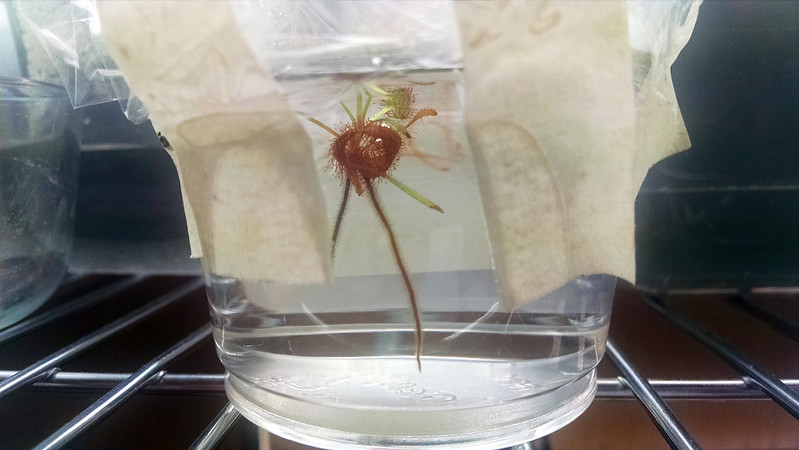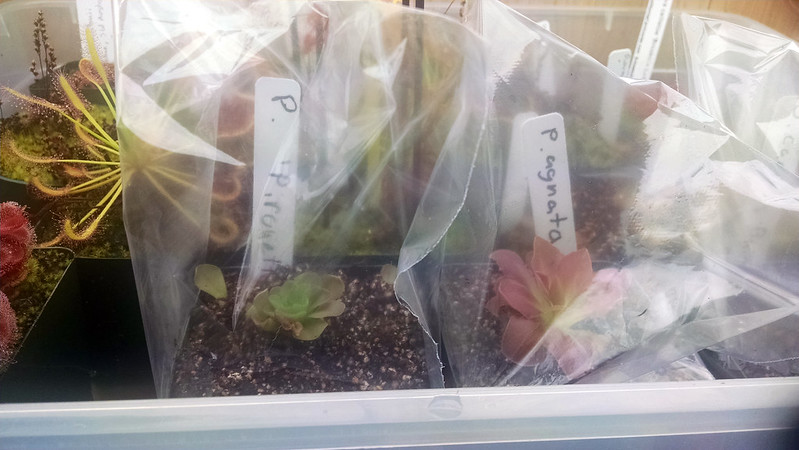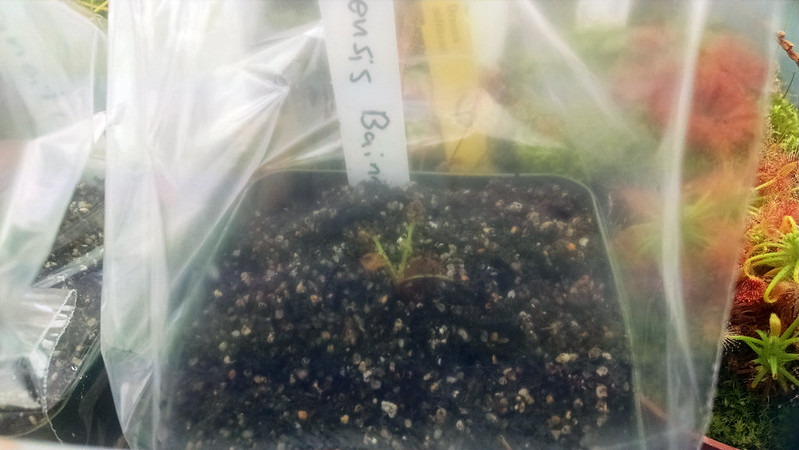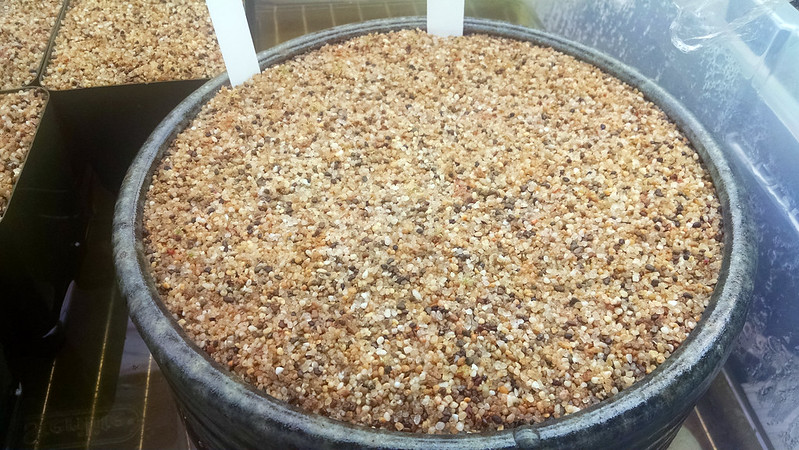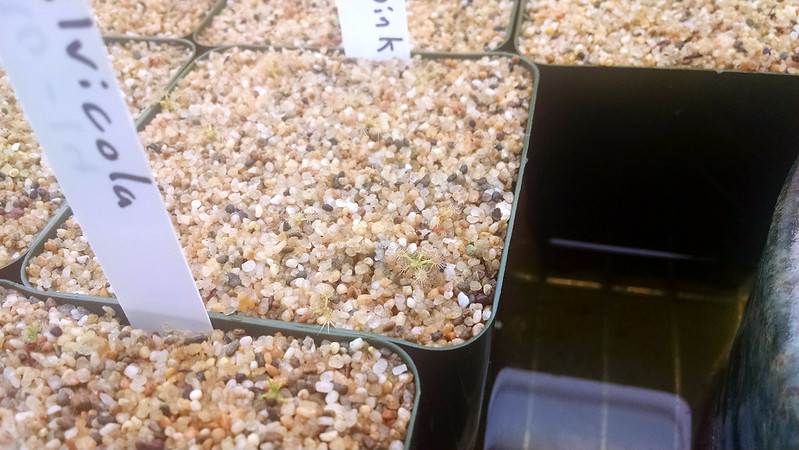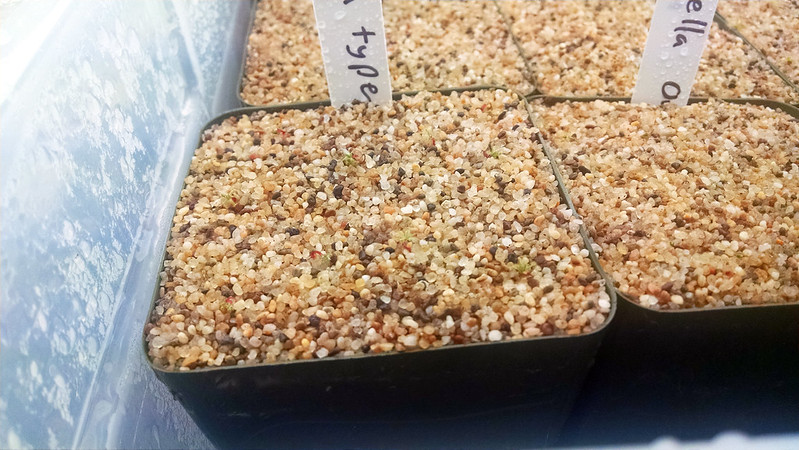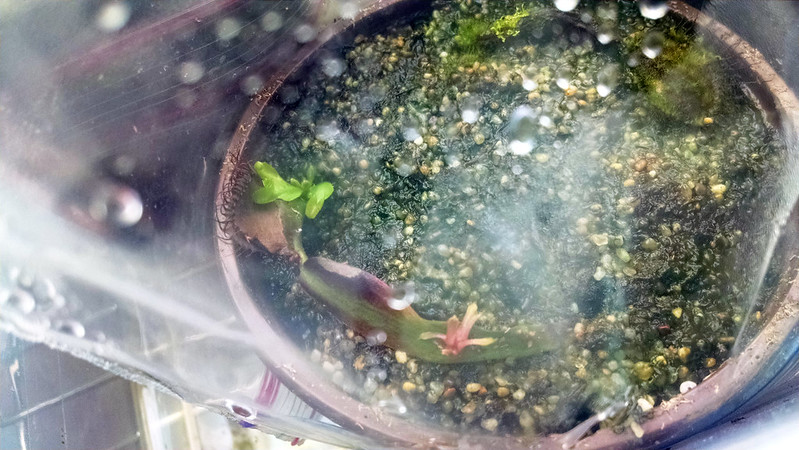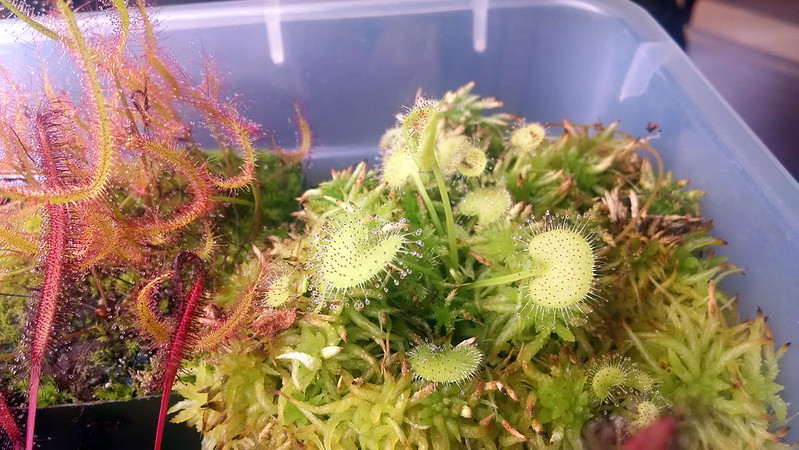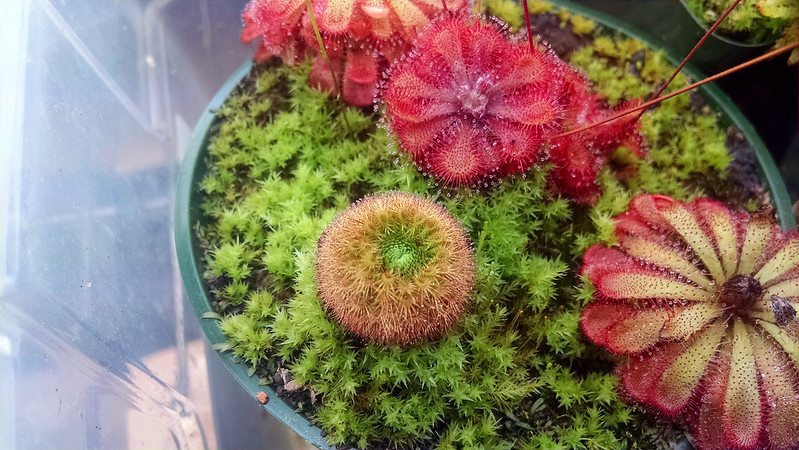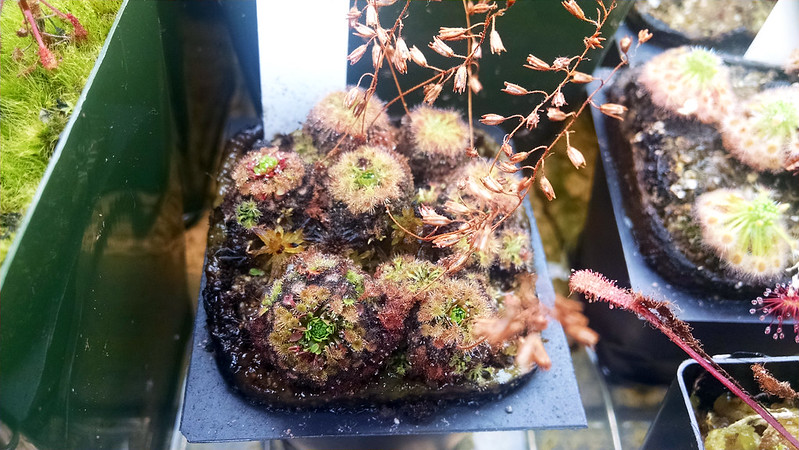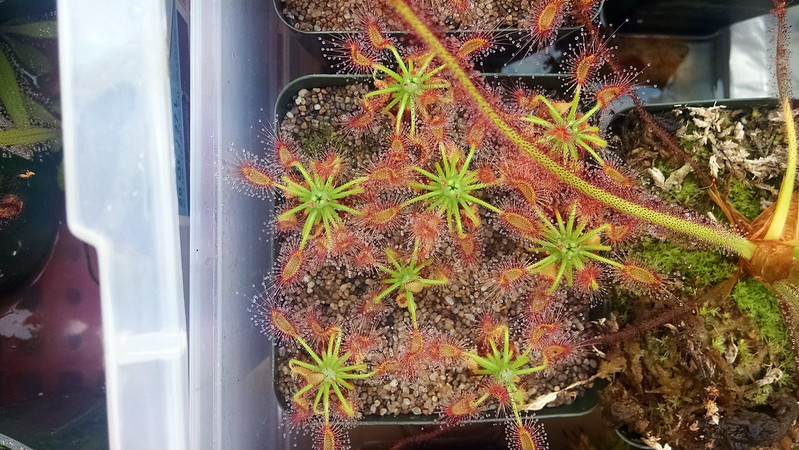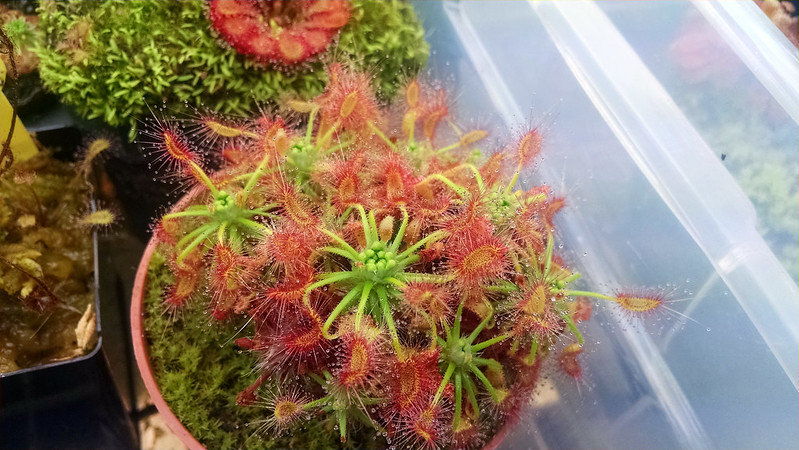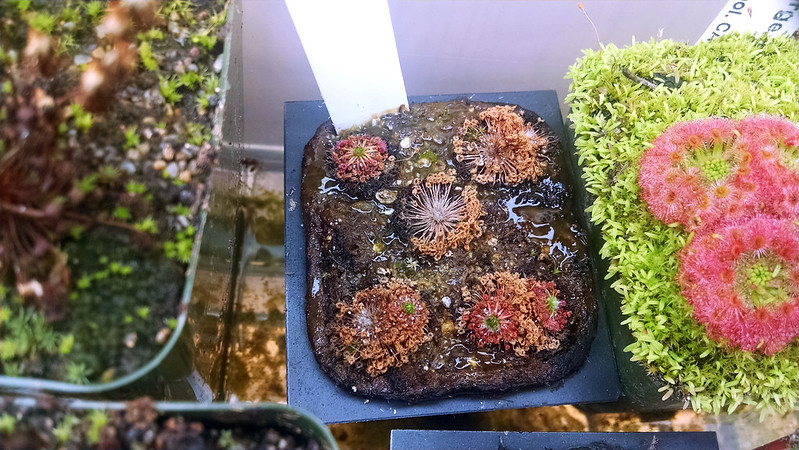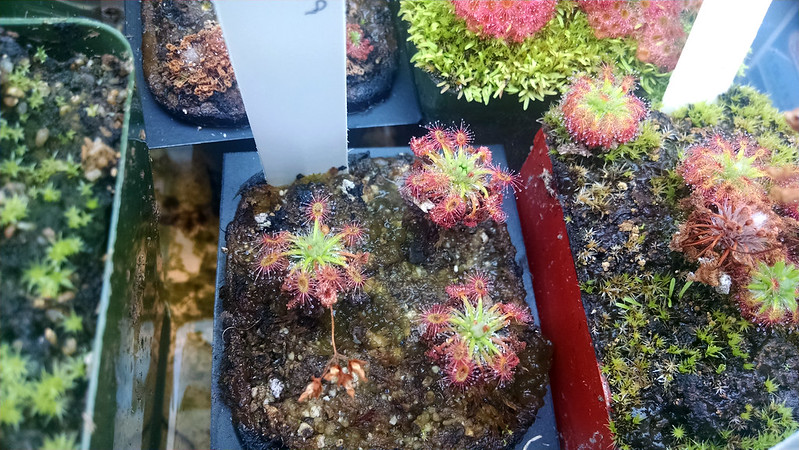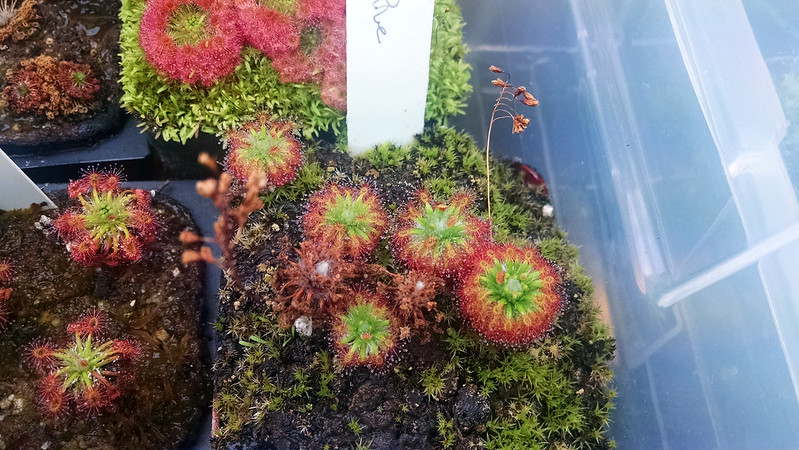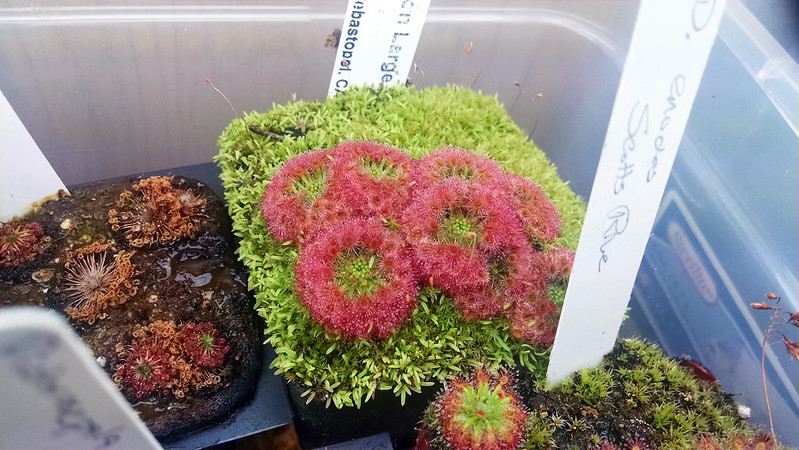Back at the beginning of July I
started a round of propagation I referred to as the Summer Batch. I started 4 species from seed and 4 from leaf cuttings. It's been 5 months, so let's see how things stand.
First up, the seeds.
Drosera capillaris was the most successful in this respect, and I've got a couple decent-looking seedlings.
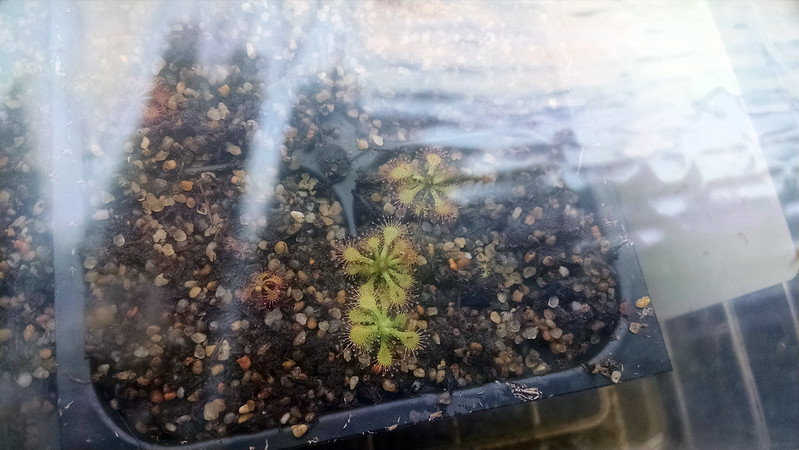 |
| D. capillaris is a very pretty little sundew. |
As well as a couple
Drosera tokaiensis.
 |
| D. tokaiensis is a pretty vigorous grower usually. Hope these take off soon. |
And, hilariously, one lonely little
Drosera burmannii (Humpty Doo) that germinated after like 4 months.
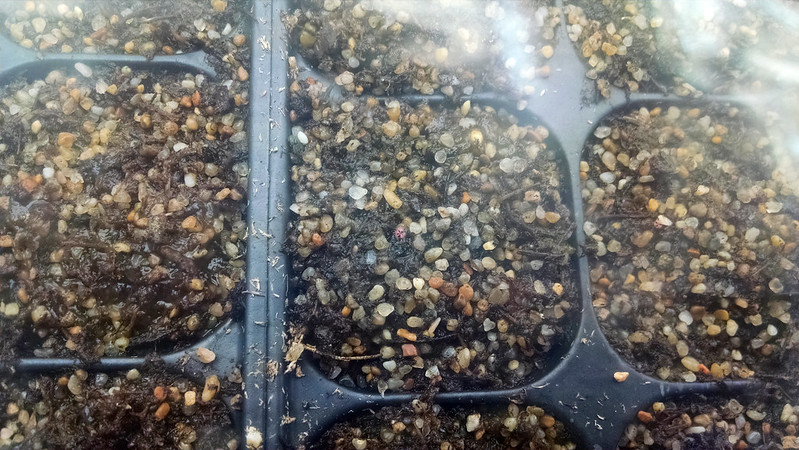 |
| This one took a while. |
I still haven't seen any
Drosera intermedia 'Cuba' sprout. I know it's not the seeds, since I've seen seed that I sent to other people germinate.
In all I'm disappointed with the seedling success rate (although pleased that
D. capillaris germinated without cold stratification). I'm not sure what exactly went wrong. I think that fancy bag of peat I used may have something to do with it – the
Drosera sessilifolia and
D. burmannii (Hann River) that I started on my standard peat a couple months later
have been doing great.
I'm more pleased with how my leaf cuttings performed, although not necessarily
elated. First up, only one of my 6
Drosera adelae plants struck, although considering the
current state of my main pot, this is more a blessing than anything else.
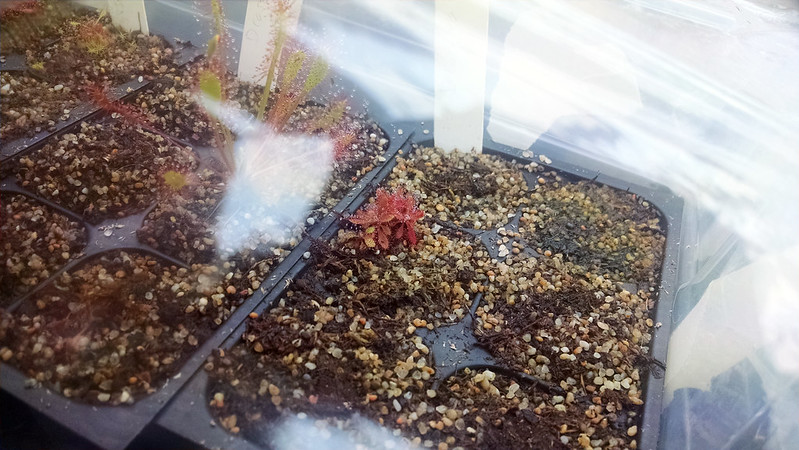 |
| The red color is very nice on these plantlets. |
On the other hand I have several nice looking plantlets of
Drosera venusta that have come up. Only one of the three cuttings struck, but dang they're pretty.
 |
| This is really a lovely sundew. I wish my mature plant was growing better. |
I also had pretty good luck with
Drosera madagascariensis. Two of the three cuttings struck, and one even has a little stem going already.
 |
| It's already got that lean oh no. |
The cutting I'm happiest about is this
Drosera anglica CA x HI. If you follow the blog you'll know I recently
lost the mother plant to aphids (essentially – it's still got some green but the prospects are grim). This plant is pretty much the size the mother plant was when I received it in March. Not too bad!
 |
| Really a stunning plant. I need to keep this one alive. |
I'll have to start propagating off of this plant now, since I really want to be able to share this guy with the BACPS and others.
What have I learned from the Summer Batch? The first thing I learned is that I played with too many variables. Changing up the peat I use, using seed starter trays for the first time, messing with a bunch of different species – it's hard to draw a coherent picture. I definitely think that the peat is part of the problem, and I don't plant on using it again (especially since it's so expensive).
The main thing I learned is that I need to be propagating more, if only to keep generating backup plants. Now I just need to make some more room under my lights.


